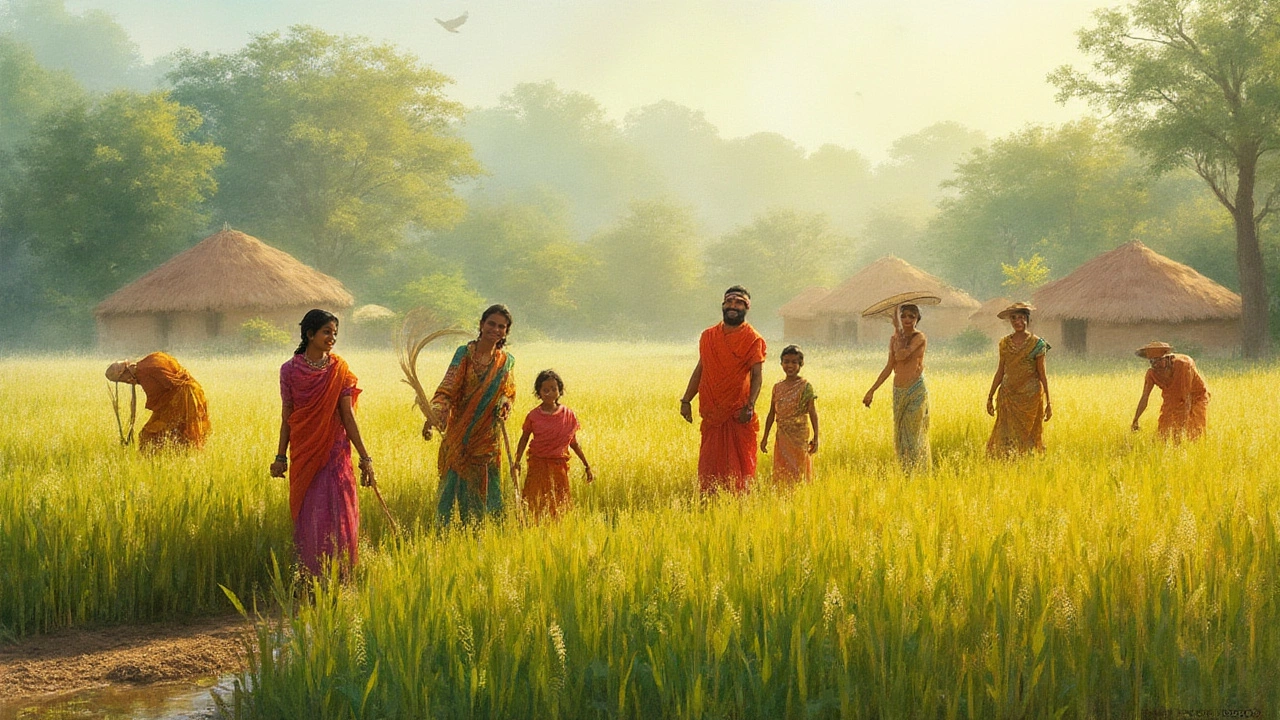Discover the meaning behind 'poor man's crop,' why certain staple crops earn this name, and smart tips for growing them in your own garden.
Staple Vegetables: What Grows Best in Indian Gardens and Why It Matters
When we talk about staple vegetables, vegetables that form the daily foundation of meals across Indian households. Also known as core food crops, they’re not just side dishes—they’re the reason the plate feels full. These are the vegetables you find in every kitchen, from the smallest village home to the busiest city apartment: tomatoes, brinjal, okra, spinach, and beans. They don’t need fancy setups. They grow in pots, in backyard plots, and even in cracks between concrete slabs. What makes them special isn’t just how often they’re eaten—it’s how well they adapt to India’s heat, monsoons, and short growing windows.
These staple vegetables, vegetables that form the daily foundation of meals across Indian households. Also known as core food crops, they’re not just side dishes—they’re the reason the plate feels full. These are the vegetables you find in every kitchen, from the smallest village home to the busiest city apartment: tomatoes, brinjal, okra, spinach, and beans. They don’t need fancy setups. They grow in pots, in backyard plots, and even in cracks between concrete slabs. What makes them special isn’t just how often they’re eaten—it’s how well they adapt to India’s heat, monsoons, and short growing windows.
They’re tied to something bigger: Indian native vegetables, plants that evolved in this region and thrive without heavy inputs. Also known as traditional crops, they’re the ones your grandparents grew before chemical fertilizers became common. These aren’t imported hybrids. They’re the bitter gourd that survives drought, the amaranth that pushes through poor soil, the cluster beans that keep producing even when rain fails. Growing them isn’t nostalgia—it’s smart farming. You save money, cut down on transport emissions, and eat food that’s actually suited to your land. And if you’ve ever tried to grow tomatoes in a balcony pot, you already know how vegetable gardening India, the practice of growing food crops in small spaces across Indian homes. Also known as urban farming, it’s become essential for families without access to farmland works. You don’t need acres. You need sunlight, a little compost, and timing.
Staple vegetables don’t ask for much. They respond to simple care: regular watering, good soil, and a little attention. That’s why they show up again and again in posts about compost, soil improvement, and balcony gardening. You’ll find guides here on how to fix dense soil for better root growth, how to pick the right container for okra, and which plants bloom all year so you can keep harvesting through winter. Some posts even tell you how to protect your harvest from rabbits—yes, they eat more than just zinnias.
This collection isn’t about perfect gardens. It’s about real ones. The ones where tomatoes ripen unevenly. Where okra gets too big if you miss a day. Where spinach bolts in the heat but still feeds the family. These are the vegetables that keep Indian homes fed. And if you’re growing them—even just a few plants—you’re part of a quiet revolution. One pot, one harvest, one meal at a time.
